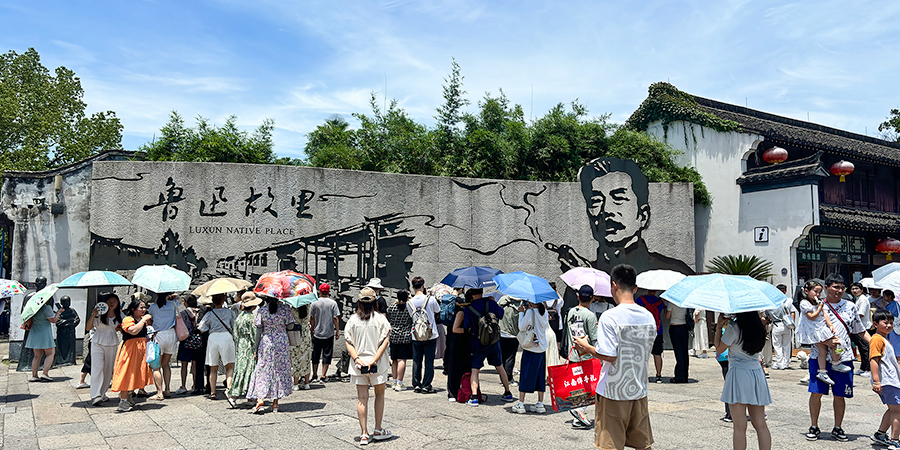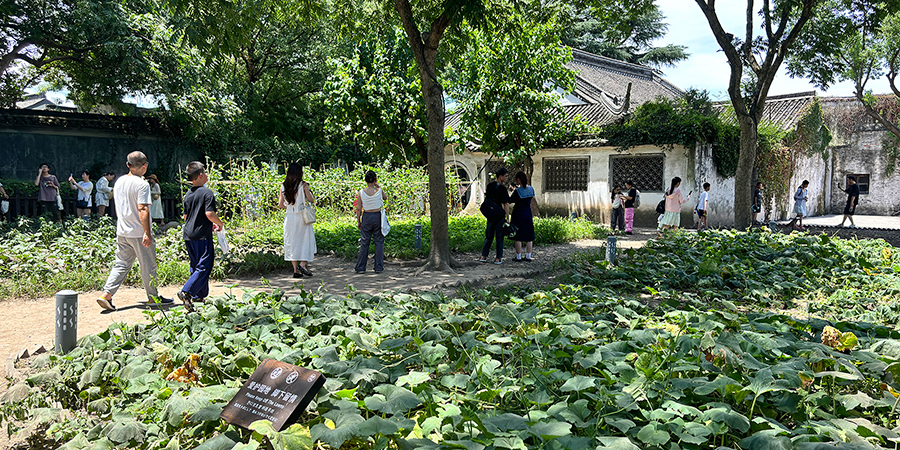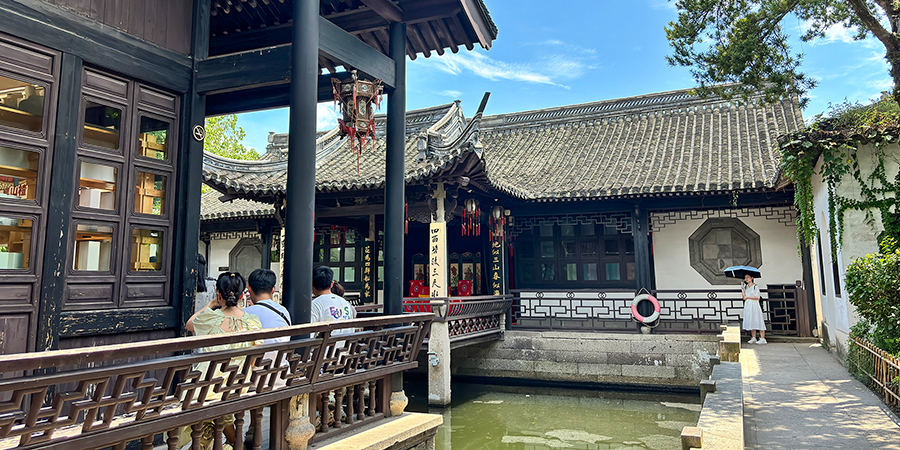Known as the writer who held the most important position in East Asia during the 20th century, and praised as the national spirit of modern China, Lu Xun was a litterateur and a great thinker in modern China. He possessed expertise in many fields, for example, writing, translation, the fine arts, and the study of ancient books. Many of his articles are included in the textbooks used by Chinese students, educating as well as encouraging them. By the way, Lu Xun is his pen name. His original name is Zhou Shuren.
Lu Xun Native Place is the name given to a large scenic area in his hometown, Shaoxing of Zhejiang Province, where he was born and grew up. Here, visitors can learn about his early life and trace the scenes he wrote about by visiting his ancestral house, former residence, pleasure ground in Baicao Garden, and his school Sanwei Study Room, etc.
The Ancestral House of Lu Xun
His ancestral home was built during the
Qing Dynasty (1644-1911). It is about 3, 692 square yards (3, 087 square meters), and include four parts. The first part is the door, above which hangs a tablet. The two Chinese characters on the tablet signify a member of the imperial academy, which was very prestigious for the people in the Qing Dynasty because this symbolizes how knowledgeable the family was and how appreciative the emperor was to the family.
The second part was used for the family to meet friends or celebrate festivals. The third part was used for the worship of ancestors or funerals while the last part was the living rooms. The rooms are all linked by covered paths to avoid the sun and the rain. The whole building is symmetrical.
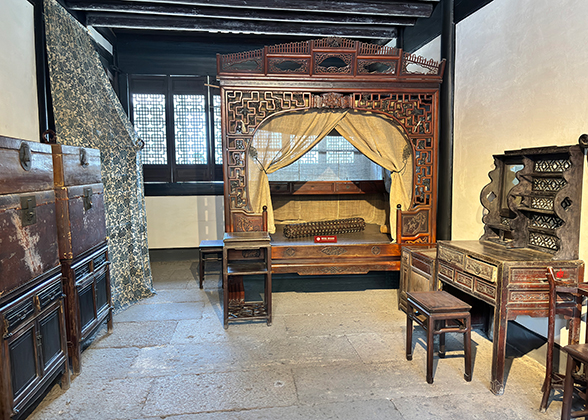 | | Ancestral House of Lu Xun | | 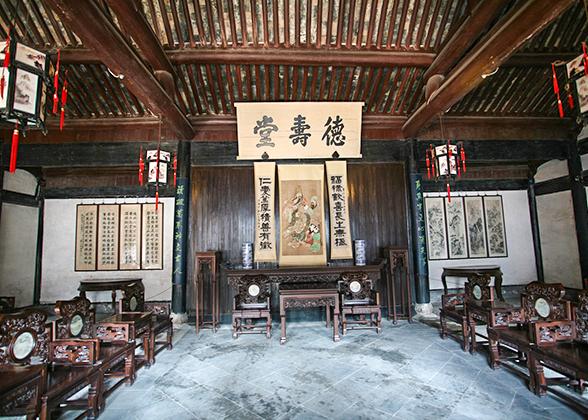 | | Reception Hall of the Ancestral House | |
The Former Residence of Lu Xun
It was in this residence that Lu Xun came into the world in September, 1881. He spent his childhood and teenage years here, which left him lots of precious memories. His life in this residence became an important source for his writing and many of the details of his daily life were included in his later works.
Baicao Garden
The garden is behind the Former Residence. This is actually a vegetable field, but is a perfect place to play games in little Lu Xun's eyes. In his childhood, he could always find something interesting to do here, whether it was catching the crickets in the grass, picking fruit, or trapping birds in the snow. His memories of this period were so vivid that he often recalled them when he was in his old age.
Sanwei Study Room
The Study Room in Lu Xun Native Place is an old-style private school in which Lu Xun spent 5 years acquiring knowledge and receiving moral education. Visitors coming here may see the desk on which he carved a Chinese character to remind himself not to be late again for class.
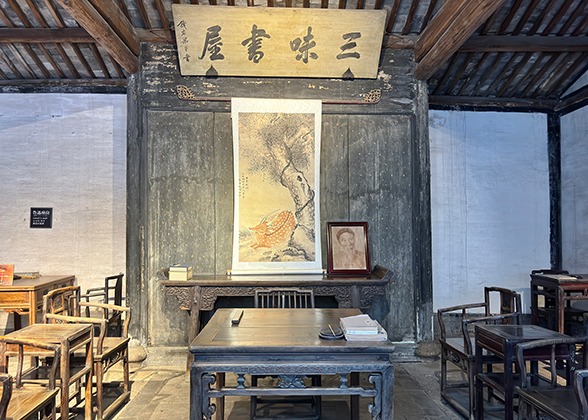 | | Sanwei Study Room | | 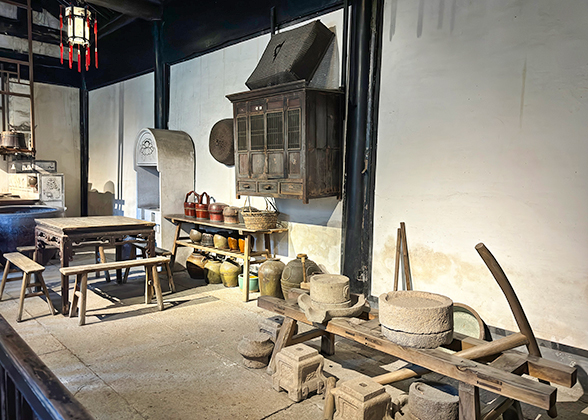 | | The Kitchen, Lu Xun Native Place | |
Xianheng Restaurant
The restaurant is decorated based at the scene described in Lu Xun’s novel, Kong Yiji. Visitors can taste the famous Shaoxing wine made of yellow rice or millet, and the beans flavored with aniseed, which are delicious local specialties. However, the food prices here are a bit expensive.
The Custom Garden
The Custom Garden in Lu Xun Native Place consists of four exhibition halls demonstrating the local customs Lu Xun wrote about in his works. The first hall shows the blessing ceremonies held during the Chinese New Year in Shaoxing; the second hall has woodcarvings showing local customs; the third hall shows how local people offered sacrifices to God; and the fourth hall tells of the local marriage customs. You can also watch a bit of Shaoxing Opera if you are interested. It lasts half an hour. There is a ten-minute-rest between the two Operas.
Memorial Hall of Lu Xun
The Hall is constructed in the Southern China style, connecting with the winding roads, planted with trees and flowers. Visitors can enjoy the scenery as well as get a complete understanding of Lu Xun. There are plenty of pictures, original manuscripts of Lu Xun and the story of his life, works, and his thoughts in each period.
Transportation
Take bus line 8, 13, 24, 88, 316b, 316c and get off at Lu Xun Native Place Station.
| Admission Fee | Visiting Lu Xun Native Place is free of charge; however, visitors need to show their passport to the staff at the entrance to get free tickets. One passport can get up to two tickets.
The time to get tickets is 8:30-16:50. |
| Opening Hours | 8:30-17:00 |
Nearby Attraction
Shenyuan Garden: A well-known romantic theme garden. Visitors can walk there from the main entrance of Lu Xun Native Place in about ten minutes.
- Last updated on Nov. 14, 2024 by Gabby Li -
